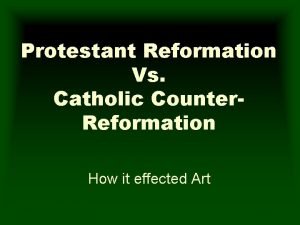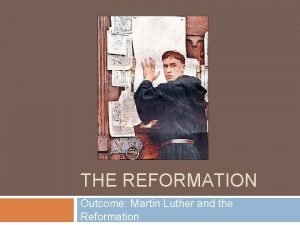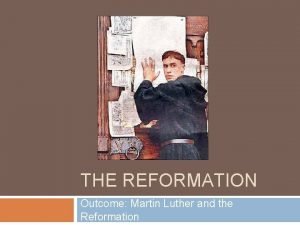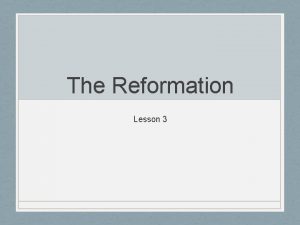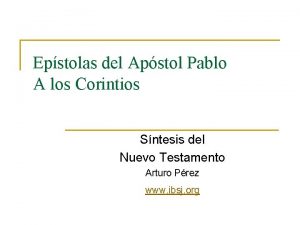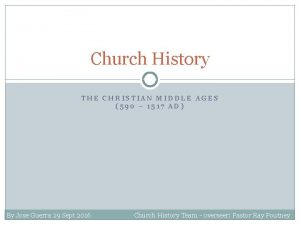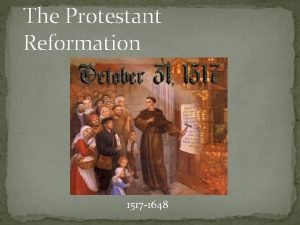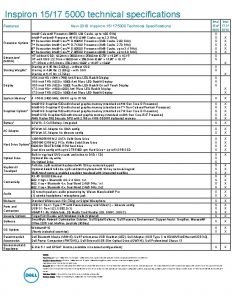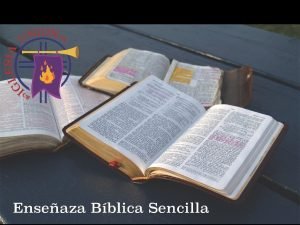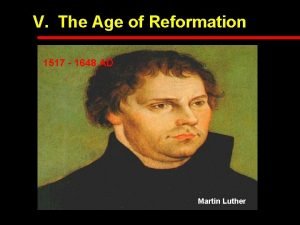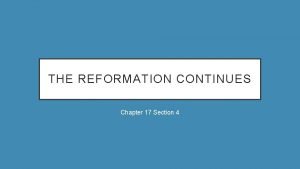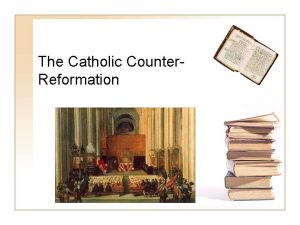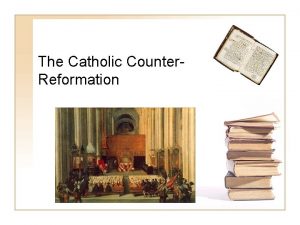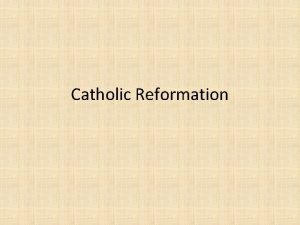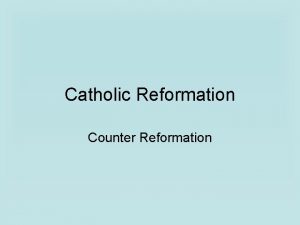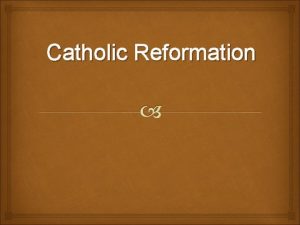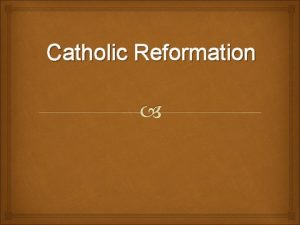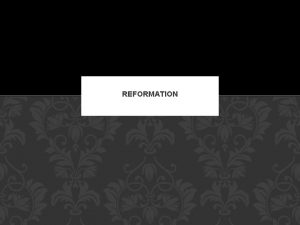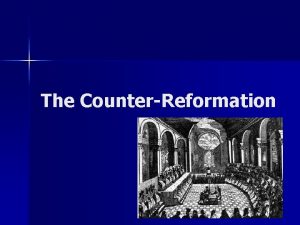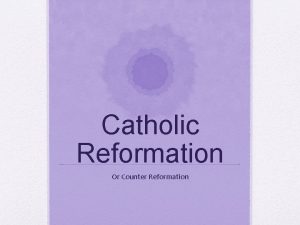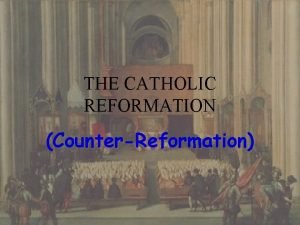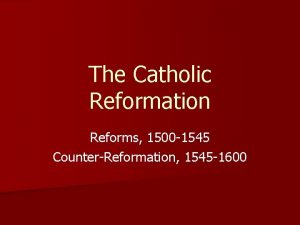CounterReformation Catholic Reformation Chapter 15 Section 4 1517













- Slides: 13

Counter-Reformation (Catholic Reformation) Chapter 15, Section 4

1517: Luther’s 95 Theses Martin Luther’s complaints with the corruptions in the Catholic Church

1521: Diet of Worms Luther asked by Charles V to renounce his ideas Luther refuses and is excommunicated by the Church

1529: Henry VIII forms Anglican Church After being refused a divorce by the Pope, Henry removes England from the Catholic Church and creates the Anglican Church

1530 s: Start of Counter Reformation Catholic Church’s efforts to fix corruptions in the church and stop the spread of Protestantism

Goals of the Catholic Reformation Revive the Catholic faith Combat heresy Officially define Catholic doctrine Slow/halt the spread of Protestantism

1534: Ignatius de Loyola forms the Jesuits Believed salvation is earned by doing good deeds Jesuits were a new order of monks who focused on missionary work, education and humanism

1536: Calvinism Formed John Calvin’s religion based on simplicity, self-discipline and extreme piety

1545 -1563: Council of Trent Defined official church positions on matters of doctrine Outlawed indulgences, increased pressure on clergy to behave better, and declared salvation is earned by obeying church rituals as well as faith

1555: Peace of Augsburg Charles V allows royalty to choose religion for their own regions

1559: Pope Paul IV’s Index of Forbidden Books and other writings forbidden by the Catholic Church All members of the Catholic Church were not allowed to read any of the books on this list

1598: Edict of Nantes Henry IV grants the Huguenots religious freedom in France

Results of the Reformation Birth of several new churches Fixed many of the Catholic Church’s corruptions Large decrease in power of the Catholic Church in Europe Large increase of interest in education in Europe Increased power of national governments and decreased power of the Pope
 Protestant reformation vs counter reformation
Protestant reformation vs counter reformation Protest reformation 1517 1648
Protest reformation 1517 1648 The reformation outcome martin luther and the reformation
The reformation outcome martin luther and the reformation The reformation outcome martin luther and the reformation
The reformation outcome martin luther and the reformation Problems in the catholic church reformation
Problems in the catholic church reformation The catholic reformation lesson 3
The catholic reformation lesson 3 Leccion 9
Leccion 9 The medieval church (590-1517 ce)
The medieval church (590-1517 ce) Holy roman empire 1517
Holy roman empire 1517 Dell inspiron 1517
Dell inspiron 1517 31 de octubre 1517
31 de octubre 1517 1517 ad
1517 ad The reformation continues chapter 17 section 4
The reformation continues chapter 17 section 4 Chapter 1 section 4 the reformation continues
Chapter 1 section 4 the reformation continues
